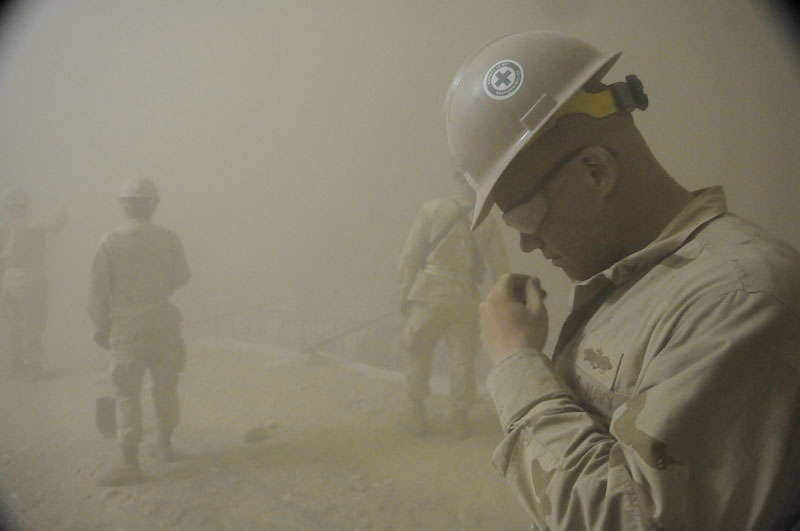
Researchers studying dust in Iraq and Kuwait say tiny particles of potentially hazardous material could be causing a host of problems in humans, from respiratory ailments to heart disease to neurological conditions.
After taking samples, scientists found fungi, bacteria and heavy metals - including uranium - that could all cause long-term health effects.
"You can see the dust," said Dale Griffin, an environmental public health microbiologist with the U.S. Geologic Survey. "It's what we can't see that will get you."
Three recent reports detail the problems, and Griffin said there are more to come.
Capt. Mark Lyles, who chairs the medical sciences and biotechnology department at the Center for Naval Warfare Studies, part of the Naval War College, co-authored with Griffin a report that they presented last year at the International Seminars on Planetary Emergencies in Italy.
The paper summarized their analysis of sand samples taken in 2004 in Iraq and Kuwait, which revealed a "significant biodiversity of bacterial, fungi and viruses of which 25 percent are known pathogens."
Just as troubling, according to the paper, was the presence of 37 elements - including 15 bioactive metals, including uranium, known to cause serious, long-term health effects in humans.
Some of the toxins may occur naturally in the soil in the Middle East, and some may come from refineries or factories in industrial areas, Griffin said. He also said the toxins could have been exposed or loosened as U.S. Humvees and tanks churned up the hardened desert top layer that has held dust down for centuries.
In a separate study, Griffin researched dust in Kuwait and around the world, and reviewed other studies, and found that bacteria can be carried by the wind. He said that finding contradicts military researchers during the 1991 Persian Gulf War era who did no microbiological research because they incorrectly concluded the region was too hot for anything to live in the desert sand.
A recent Military Times analysis of military health data from 2001 to 2009 showed the rate of respiratory issues among active-duty troops rose by 32 percent; cardiovascular disease rose 30 percent; pregnancy and birth complications were up 47 percent; and neurological conditions, such as multiple sclerosis and Parkinson's disease, were up nearly 200 percent.
The National Research Council of the National Academies released a report this year that said the Defense Department's Enhanced Particulate Matter Surveillance Program needs to be reworked, and that the military lacked sufficient data to properly study the health effects of particulate matter exposure.
That report came in the wake of two other military studies - one that looked at various health concerns, and another that looked specifically at heart and respiratory issues. Neither had found any connection to exposure to particulate matter.
But the National Academies report stated that "a large body of epidemiologic research has shown associations between short- and long-term exposures to particulate matter and a broad array of respiratory and cardiovascular effects in the general population and in susceptible people."
The tiniest particles - up to 1,000 of which can sit on the head of a pin - embed deeply in the lungs along with whatever matter they carry. Griffin said he worries that the combination of bacteria, fungi and metal found in Iraq and Afghanistan can further complicate the health risks to U.S. combat troops.
Noting the rise in respiratory and heart problems over the past decade, Griffin said, "If you look at the [civilian] population, you don't see these numbers."
Service members are generally "a healthy group, too," he added. "You would think they'd be less susceptible."



Reader Comments
to our Newsletter